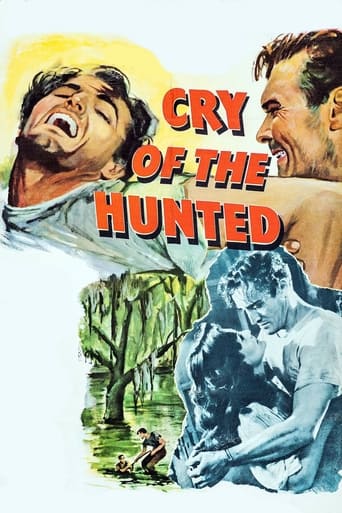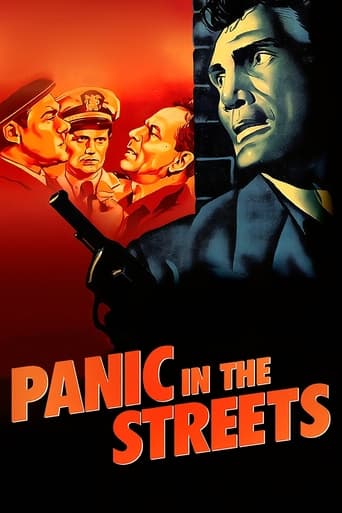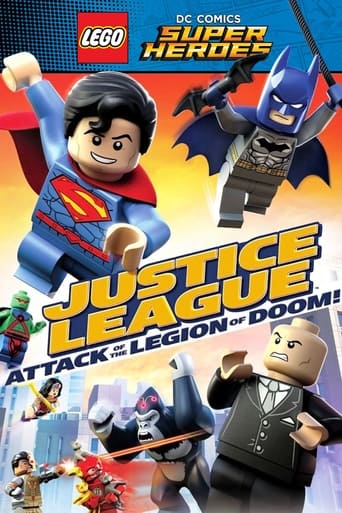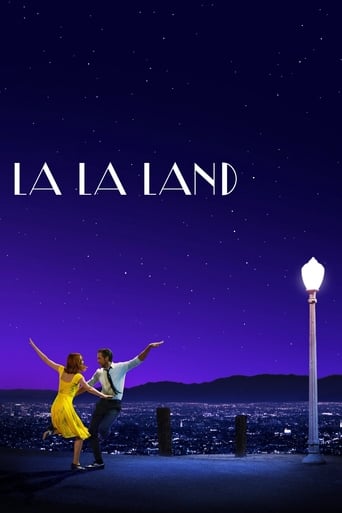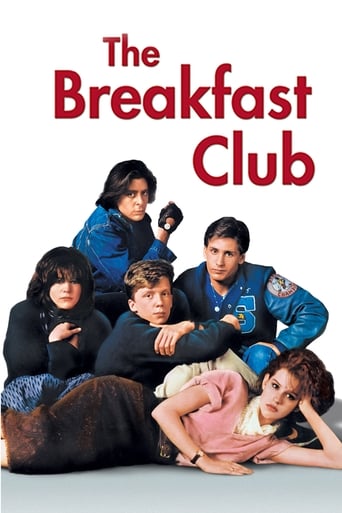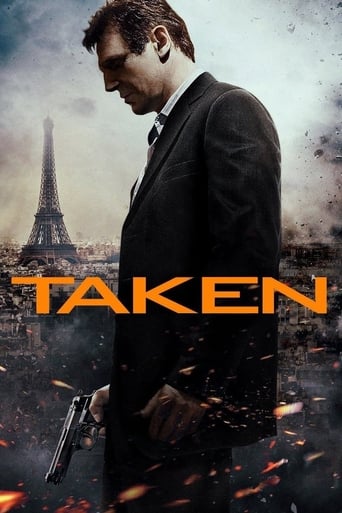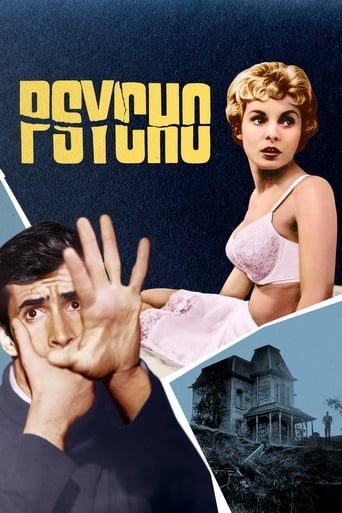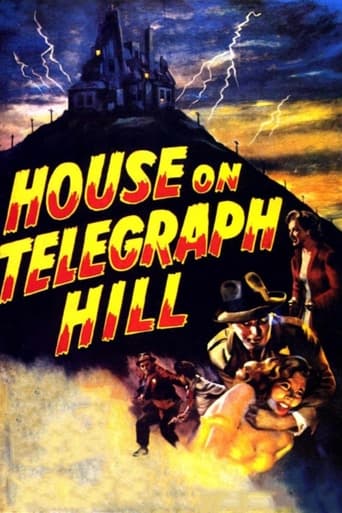


The House on Telegraph Hill
Concentration camp survivor Victoria Kowelska finds herself involved in mystery, greed, and murder when she assumes the identity of a dead friend in order to gain passage to America.
-
- Cast:
- Richard Basehart , Valentina Cortese , William Lundigan , Fay Baker , Steven Geray , Herbert Butterfield , Mario Siletti


Similar titles
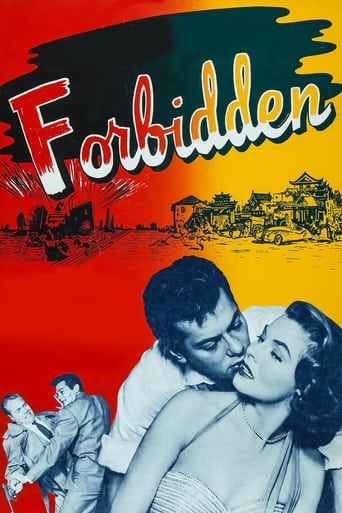
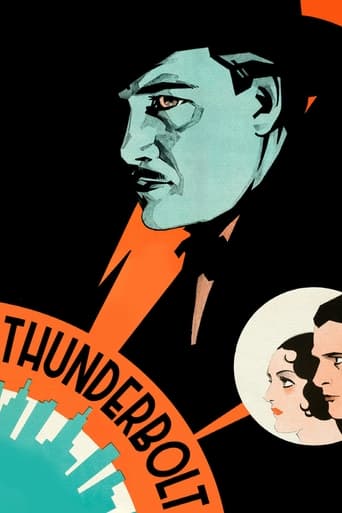
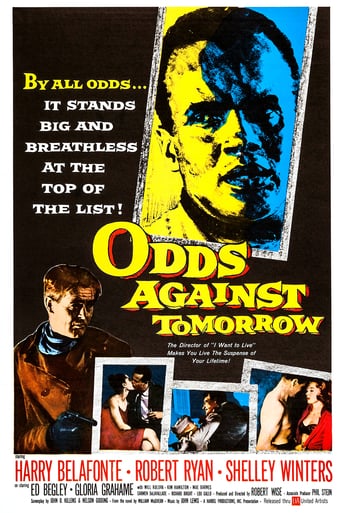


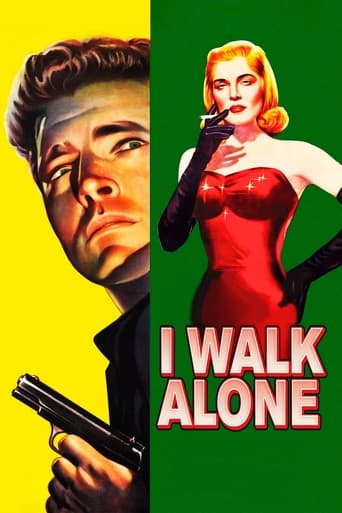

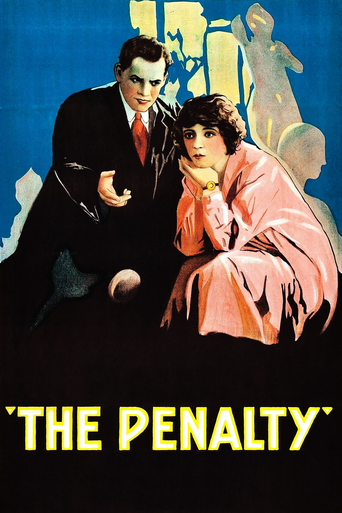
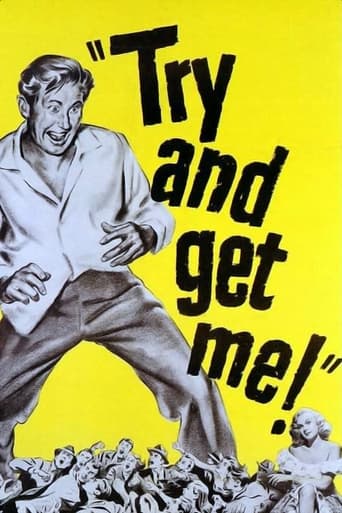
Reviews
I like the storyline of this show,it attract me so much
One of my all time favorites.
Wow! What a bizarre film! Unfortunately the few funny moments there were were quite overshadowed by it's completely weird and random vibe throughout.
This film is so real. It treats its characters with so much care and sensitivity.
How'd we get in the mess we're in? We ignored films such as The House on Telegraph Hill and when we did see them, we forgot about them, or else we figured, 'awww, that's only in the movies'.Yeah. Right. Where'd Chandler get the ideas for his detective thrillers? From the newspapers, that's where. From life.This is a classic case of art imitating life. It's all here. The mansion, the poisonings, the phones left conveniently off the hook, and most tellingly, most tediously, as the crime syndicate known as "The Zecchino Estate Grifters" proved time and again, the predator always paints himself as The Victim and tars those whom he targets as The Villains. That they pull this tiresome old gag is one thing, but that people who should know better still fall for it is enough to...well, it's enough to make you understand why they still pull it, isn't it? Why innovate when last year's stale old gags work?The House on Telegraph Hill is an explicit Black & White blueprint as to the ways in which conniving, gutless, termites will kill anyone who stands between them and the riches they covet. It's also a fine object lesson in the ways in which, despite their endless repertoire of half-clever tricks, they inevitably they make fatal mistakes which topple them fall into the traps they so carefully set for others.Richard Basehart makes you want to bash his face, in The House on Telegraph Hill. He lies, he poses, he snivels and whines like a psychopath and plays The Victim at every turn. He falsely accuses his victims of trying to harm him. He follows his intended victims and turns up in front of them, every time they try to summon help.There's just something about his behavior that makes you want to bash his face, it's so bloody tediously predictable. Were this film set in our era, why I bet he'd even apply for a Restraining Order against his victims, and then sue them for Defamation, wouldn't he?Richard Basehart's character is waging war,a war against those who rightly inherit. It's war and he knows it. Eventually, his lovely intended victim knows it as well and rather than bash his face - which is just what he wants - she uses her mind to alert trusted friends and as well to restrain herself in face of his endless provocations.Why's she do that? So that in coming straight for her, he unintentionally falls straight into the trap he set for her. Sweet. Doubtless, he's convicted and sentenced to death.Mmm, mmm, mmm....can't you just hear the pellets dropping into the acid vat beneath the chair, and smell the gas, as he rocks back and forth in that nice round steel room they have up at Q known as, 'The Gas Chamber', the place to which all two-bit connivers who covet what belongs to others will inevitably go?A magnificent film which should be an integral part of the syllabus of every criminal justice curriculum.Paul Vincent ZecchinoCritic of Critical MassManasota Key, Florida24 April, 2011
The House on Telegraph Hill is directed by Robert Wise and adapted for the screen by Elick Moll & Frank Partos from the novel The Frightened Child written by Dana Lyon. It stars Richard Baseheart, Valentina Cortese, William Lundigan & Fay Baker. Filmed on location primarily in the Telegraph Hill area of San Francisco, the film features photography by Lucien Ballard and a musical score directed by Alfred Newman.Victoria Kowelska (Cortese) survives Belsen, but with her family killed by the Nazis she is all alone in the world with no identity. With her Belsen friend Karin Dernakova (Natasha Lytess) not surviving till liberation, Victoria decides to take on Karin's identity to get to America. Under the guise of being Karin, Victoria winds up in San Francisco, living in a prime mansion, married to Dernakova trustee Alan Spender (Baseheart), mother to young Chris (Gordon Gebert) and heiress to the family fortune. But the House on Telegraph Hill is home to many secrets and unanswered questions: Can Alan be trusted? Why is Margaret (Baker) the housekeeper cold towards her? What really brought about the death of the recently deceased aunt? And can she even trust her only real friend, Major Marc Bennett (Lundigan)?Director Robert Wise was one of the most versatile men to have ever worked in cinema . He pretty much covered all genres in his long and distinguished career, here for The House on Telegraph Hill, he blends Gothic melodrama with film noir leanings. Nominated for an Academy Award for Best Art Direction (Wheeler, DeCuir, Little & Fox), the film is certainly a lavish enough production, and for sure the story is well elaborated, but the picture as a whole is not all that it can be. For although it's rich with an eerie ambiance that's occasionally punctured by the promise of some sinister intervention, it never delivers on its promises. The suggestions and heightened tensions grab the attention, but the screenplay doesn't allow the woman in danger scenario room to grow. None of which is helped by the fact that the film opens with Victoria narrating her flashback in past-tense voice over! It's hardly a smart move by the makers that, is it? Perhaps it's wrong to judge it as being part of the group that contains, Rebecca (1940), Suspicion (1941), Gaslight (1940/1944) and The Spiral Staircase (1946)? But fact remains it's a long way from being half as good as any of those films.However, there is still enough in Wise's film to keep it above average and make it a safe recommendation to fans of the "woman-in-mansion-in-peril" sub-genre. The story is well played by the principal actors. Baseheart has to play his cards close to his chest in the tricky role that requires him to keep us guessing as to if he is good or bad. That he offers no clues is testament to the good performance Baseheart gives. Italian actress Cortese binds the film together with a layered performance that contains excellent visual acting, where nervous smiles and saddened eyes tell of guilt and longing that the screenplay has sadly not let the character expand upon. Baker is a touch underwritten, but does a neat line in icy cold veneer, while Lundigan offers up a nice counterpoint as the other man in Victoria's life. Having Lucien Ballard on cinematography is a good move. Be it capturing the expansive colour vistas for Budd Boetticher & Sam Peckinpah in Westerns, or shooting in atmospherically stark black & white for the likes of John Brahm & Jacques Tourneur, Ballard showed himself to be a master photographer. Here in the brooding Dernakova mansion he deals in shadows and low lights to great tonal effect. Alfred Newman's (a record 9 time Academy Award winner) score, aided by Sol Kaplan, is very dramatic and flows freely around the house and is at one with Victoria's various emotional states.The House on Telegraph Hill contains menacing undertones that are boosted by camera, music and acting. If only the writing was in tune with those things then we would be talking about a classic of its type. 6.5/10
During the Second World War, Victoria Kowelska, the widow of a Polish officer killed during the fighting, is arrested by the Nazis and sent to Belsen. While in the concentration camp she befriends Karin Dernakova, a fellow Pole who has family in America. Karin dies shortly before liberation and Victoria, who has Karin's papers, decides to assume her identity. As "Karin" she makes her way to the Telegraph Hill area of San Francisco where she meets Karin's young son Christopher who accepts her as his mother. She meets Karin's only other surviving American relation, her cousin Alan Spender, who starts paying court to her, and the two are eventually married."The House on Telegraph Hill" is sometimes described as a film noir, but like another reviewer I feel that it does not quite fit that description as it lacks a number of common noir characteristics such as chiaroscuro photography, a complex plot and an atmosphere of moral ambiguity. It is rather a suspense thriller in the style of Alfred Hitchcock with close thematic similarities to a number of his films, especially "Rebecca", "Suspicion" and "Notorious". Each of those films has as its main character a woman who has reason to suspect her husband of murder or attempted murder; here Victoria comes to believe (with good reason) that Alan is trying to kill both her and Christopher. In the final scenes a glass of orange juice takes on the sinister significance that the glass of milk had in "Suspicion".As in "Rebecca" and "Notorious" the action is set in a sumptuously decorated Victorian Gothic mansion. Following the revival of appreciation of Victorian architecture which took place in the late twentieth century this style of decoration seems a welcoming one, speaking to us of luxury and good taste. In the forties and fifties, however, however, things were different. The architectural styles then in vogue were the clean lines of Art Deco and the deliberate plainness of the International Modern Movement; with a few exceptions, such as John Betjeman, Victorian architecture had few friends. The decor of houses like these, therefore, reminiscent of a museum or a church, would have seemed to contemporary audiences fussy, outdated and airless, even sinister. (Max Ophuls also uses a Victorian Gothic atmosphere to similar effect in "Caught"). Another link with "Rebecca" is the character of the governess Margaret, clearly based upon Mrs. Danvers in that film.After "Bullitt" and the "Dirty Harry" films it became common for films set in San Francisco to feature car chase scenes, something to which the city's hilly terrain was well suited. "The House on Telegraph Hill" contains an early example of this phenomenon- although the scene in question is not exactly a chase. Victoria's brakes fail as she is driving downhill- they have, of course, been deliberately tampered with- and she has to fight to stay in control of the car. (Incidentally, I wonder if any real-life murderers to have ever adopted this method, so beloved of cinema villains, of killing their victims).I would not rank this film as highly as the three Hitchcock films mentioned above, although it has some good points; Valentina Cortese, for example, makes a sympathetic heroine as a woman desperately trying to find happiness after suffering much. Richard Basehart, however, is not a particularly memorable villain. (He and Cortese were to marry after meeting during the filming of this movie).Apart from the car scene mentioned in the previous paragraph, there are no directorial set-pieces worthy of the Master, and it lacks the sense of tension found in all his best films. (Unlike Hitchcock, the director Robert Wise was not a specialist in thrillers, but worked in a variety of different genres; his best-known films today are probably the musicals "West Side Story" and "The Sound of Music"). The device of having Victoria assume another woman's identity does not really come off; little in the rest of the film hangs on the fact that she is an impostor, and the plot would not have been significantly different if the real Karin Dernakova had returned to San Francisco after surviving her ordeal in Belsen. The final death scene is too drawn-out and lengthy to be effective. The film may have been intended as homage to Hitchcock, but I can think of several other films from the fifties and sixties ("Niagara", "The Prize", "Charade") which imitated the Master's style more effectively. 6/10 Some goofs. Belsen was liberated by British troops, not American ones as shown here. The normal Polish spelling of the heroine's name would be "Wiktoria", not "Victoria".
The interesting American career of Italian actress Valentina Cortese met a high point here, in one of her best known films. The next year, she gave an even better performance in SECRET PEOPLE (1952, see my review), but here she is also excellent. Here she plays a Polish woman (whereas in SECRET PEOPLE she is Italian), presumably based upon the theory that one foreign accent sounds like any other to the Americans, and with those exquisitely sensitive eyes she might as well be Polish, indeed from anywhere she says, because we believe her. The story commences in the grim surroundings of Belsen, where she and a woman friend are imprisoned by the Nazis. Her friend dies three days before the American liberators arrive, and Valentina assumes her identity because at least the friend has a son in America, while she has no one and nothing left, and anyway she speaks English with an Italian accent so that's OK then. This eventually leads her as a displaced person to New York, where she meets an intimidating lawyer and the sinister Richard Basehart, who is guardian of 'her' young son, who is named Chris and lives in a big mansion on Telegraph Hill in San Francisco. The American Major who interrogated Valentina at Belsen turns up at a party, as American Majors do in films, especially when they are played by handsome and reliable William Lundigan, and she turns to him for help because she is becoming worried by Richard Basehart, who married her as soon as he saw her in New York, and she soon realizes it was really to secure his position in control of the large family fortune. Yes, the story is pretty far-fetched. Robert Wise does his usual superior job of directing, but this script needs more than that. Despite the fact that this film is largely set on Telegraph Hill, it is not one of those hills which is alive with the sound of music. There is a playhouse at the bottom of the garden with a big hole in the floor through which one can fall 300 feet to one's death. It has been sitting there like that for four years 'since the explosion'. For such a large and carefully-kept mansion with a Chinese butler, there is a distinct shortage of maintenance in the garden despite its impeccably cut lawn! Naturally, Valentina falls down the hole when she is cornered there by Basehart, but he grabs her hands and saves her from death. But that is only a temporary respite, for there is the poisoned orange juice to come. Oh, but between those two events, there is the brake fluid drained from the car. And you know how steep those San Francisco hills are without brake fluid. She is saved by a pile of construction sand onto which she lands when the car crashes and she is thrown out. Everything about this story is perfectly natural and happens every day. Valentina loves 'the feel of silk on my skin again' after her sufferings at Belsen, and she has a very sweet nature, but there is a creepy woman named Margaret in the house (played by the eerily forbidding Fay Baker) who is very possessive of the little boy Chris, whose only interest appears to be baseball and is played by a child actor named Gordon Gebert who has a rather annoying voice and is badly handled on screen. Robert Wise had clearly not learned the art of directing children yet. The tension mounts as we slowly climb the Telegraph Hill of this story, and the tale becomes increasingly Gothic and less and less convincing. Will Valentina, who survived Belsen, also be able to survive Basehart's machinations to do her in and have the money to himself? It is very much touch and go and I ain't sayin'.

